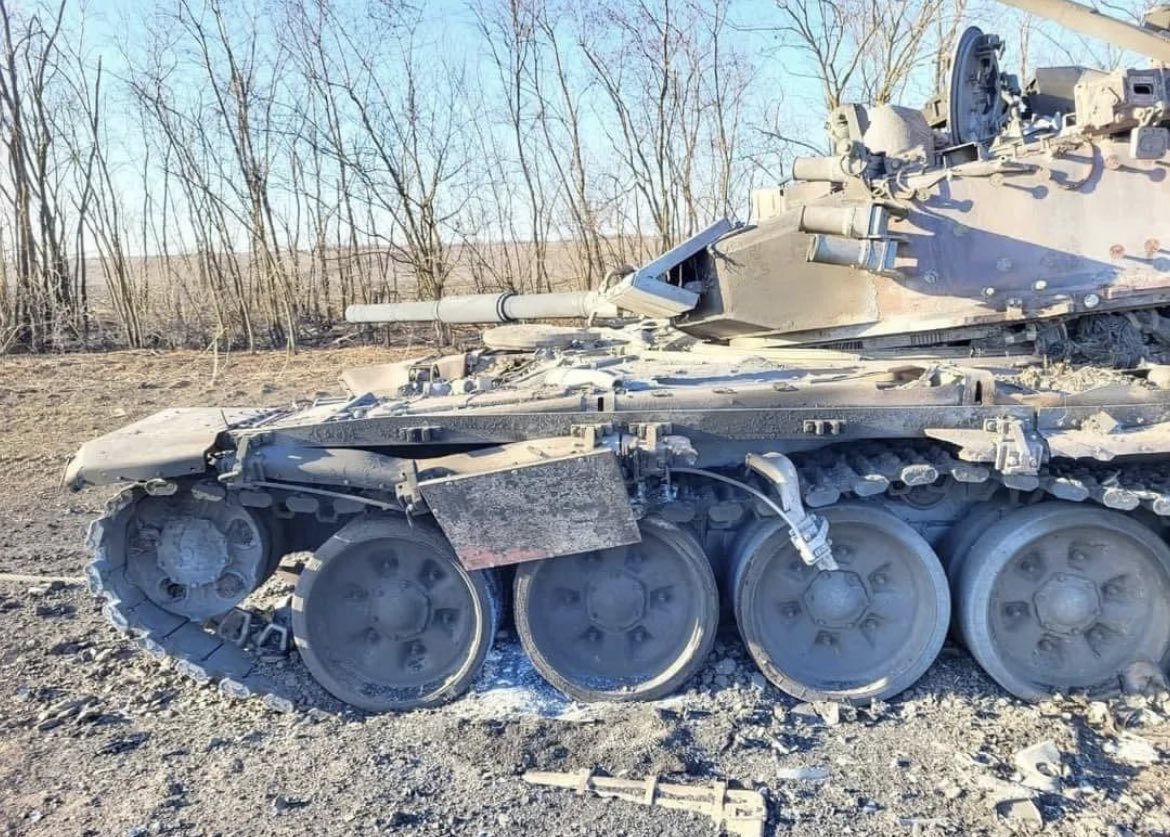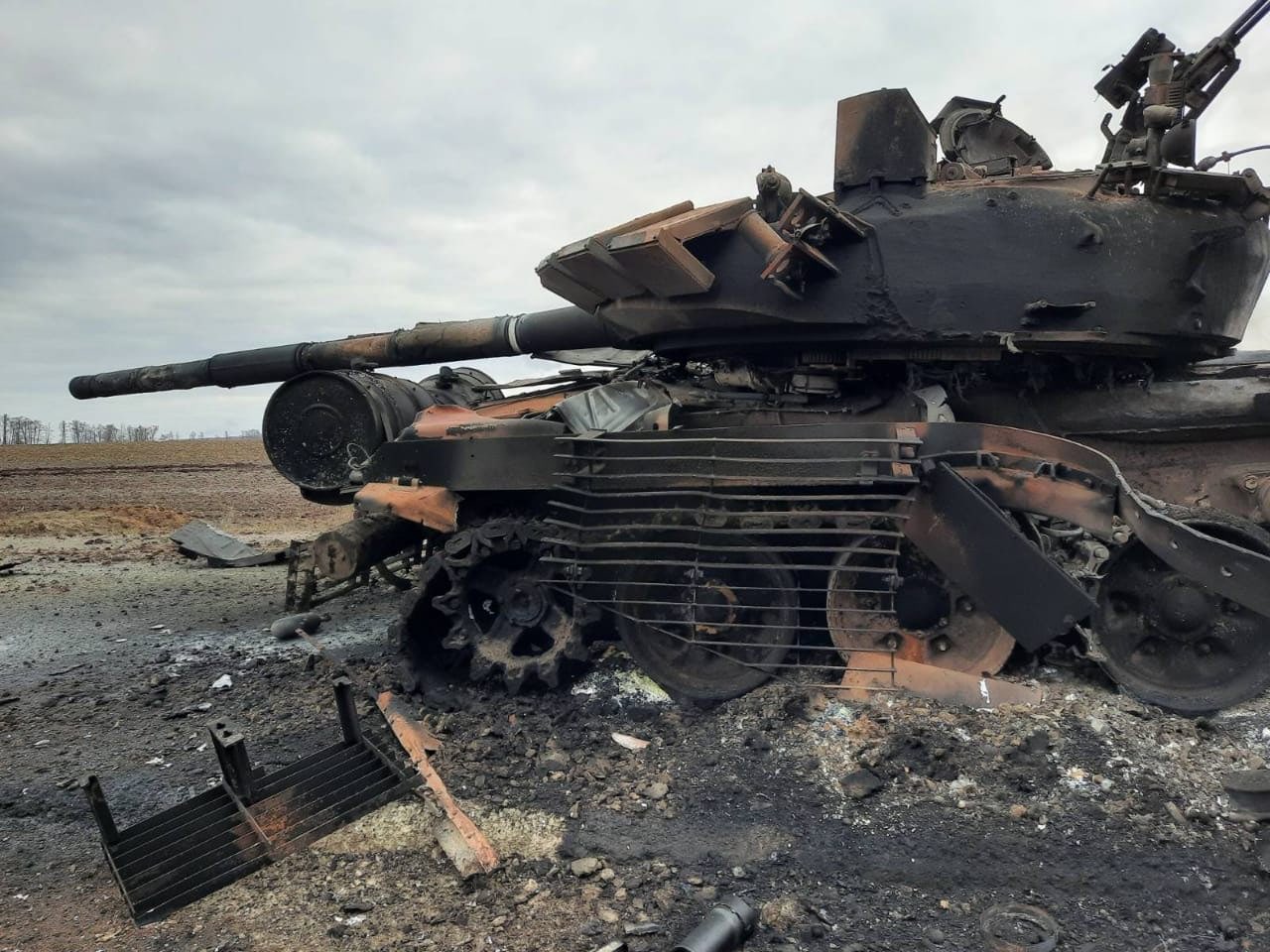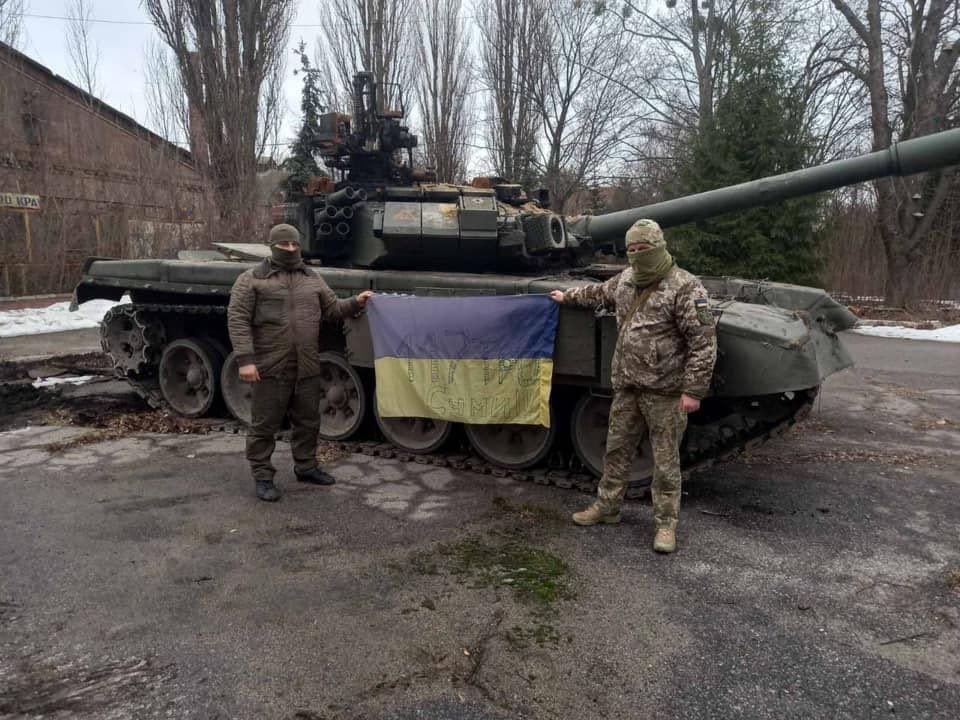Ukraine’s resistance to Russian invasion has hinged on the destruction of its tanks with NATO-supplied MANPADS and Anti-tank Guided Missiles. Several visuals of Russian tanks burning, fracturing, and even rusting have gone viral on social media. However, the carnage of the mighty Russian T-90 raises concerns about its potential.
Though figures vary, data from Ukraine Armed Forces claim that Russia has lost about 698 tanks as of April 7, 2022, Kyiv Independent informed. An independent weapon tracker Oryx had earlier pegged the number at 427 based on photographs and open-source data in the public domain.
These are the indicative estimates of Russia’s combat losses as of April 7, according to the Armed Forces of Ukraine. pic.twitter.com/h66hhbFcAf
— The Kyiv Independent (@KyivIndependent) April 7, 2022
Anti-tank guided missiles have taken a toll on Russian armor, and the Ukrainians have devised novel ways to overcome Russian tanks with MANPADs (man-portable air defense systems) like the Javelin. Russia has mainly deployed the T-72, the T-80, and the T-90 battle tanks in Ukraine among others.
There have been different figures for the T-90s lost in Ukraine but no figure withstanding, the shooting down of these ‘invincible’ tanks come as a rude shock to Russia. Troops have also been known to abandon their tanks on occasion after coming under fire from Ukrainian missiles and drones.
Two T-90s captured by the Ukrainians in March could be seen in a video that garnered more than 2 million views on YouTube. With several burned-out hulls of T-90 tanks littering the battlefield, Vladimir Putin’s tank battalions have been running for cover from Javelin and NLAW anti-tank weaponry.

There had been a clamor about Russia deploying fewer T-90s and T-14s than expected to the battlefield in Ukraine. However, the reason for its caution has largely remained unknown.
With the losses of the T-90s, Indian military experts would be watching cautiously.
India has a fleet of T-90 tanks that had been successfully deployed in the Ladakh region during the conflict with China. India could be keenly analyzing the performance of both T-72 and T-90 tanks that make the bulk of its armored fleet.
What Is Wrong With T-90 Tanks?
The T-90S main battle tank (MBT) is a more sophisticated variant of Russia’s T-series tanks, with improved firepower, mobility, and protection.
It is designed to strike with explosive reactive armor (ERA) as well as low-flying air targets like helicopters, at a range of up to 5 kilometers.
#WWIII #worldwar3 #Ukraine #Putin Flipped over via explosion. T-80 or T-90 tank. pic.twitter.com/Crx4PDYBVW
— CrowJack (@CrowJack4) February 25, 2022
The 9M119 and 9M119M missiles feature semi-automatic laser beam-riding guidance and a hollow charge warhead and are fired by the missile system. Both munitions and missiles can be loaded into the weapons’ automatic loader.
The decimation of T-90 tanks has concerned military experts. However, from what information is available, it seems that the MANPADs and ATGMs have outgunned superior Russian tanks and have largely been successful in slowing the momentum of the Russian armored offensive.

While Javelins, Stingers, and the NLAWs were the first to arrive on the scene, the British later gifted even more precise and lethal Starstreak missiles to Ukraine with more anti-armor weapons to arrive soon.
These MANPADs have been wreaking havoc on advanced Russian tanks. However, it is surprising how the Russian T-90 tanks with their protective systems could not stall the missile attack.
Collapse Against MANPADS?
The T-90 tanks wield countermeasures, known as the Shtora-1 active defensive system, which were designed to confuse incoming enemy missiles’ guidance systems. It’s a laser warning device with an infrared jammer.
The system can let out smoke to block the incoming “thermal and laser wave bands” after receiving a threat signal. The ATGM is prevented from homing in on the tank by a pair of electro-optical jammers.

However, according to Major General G.D Bakshi (retd) of the Indian Army writing for The Sunday Guardian, the Active Protection System (APS) on the T-72 and T-90 tanks was almost totally absent despite the dense anti-tank environment they had to operate in.
Further, the auto-load mechanism on the T-90 cannon is designed to discharge high-explosive anti-tank rounds downrange quickly. This reduces the crew size to three and eliminates the requirement for a human loader. The armor was also thought to be a source of strength, which has failed to defend itself for reasons unknown.
Former Major in the Indian Army and Geopolitical analyst Madhan Kumar told the EurAsian Times: “We don’t know the exact number of T-90 tanks taken down by the Ukrainian military but open-source data roughly put together suggests that there have been 15 such losses. The MANPADs especially Javelins are responsible.
#Ukraine: A Russian T-90 and 2S3 Acacia SPG got stuck in a field near #Sumy and were abandoned by their crew. If recovered, they would be operational. pic.twitter.com/UMuOlRTDrV
— ?? Ukraine Weapons Tracker (@UAWeapons) February 27, 2022
A key reason is that the missile can penetrate heavy armor of 600 to 800mm but the T-90s are stronger than that so to cover this lacuna, the missile goes vertically upwards and it has a top-hit mode so it hits the tank from the top at the turret.
The body of the tank has an anti-missile explosive reactive armor that when struck by a missile reduces the kinetic impact of the incoming missile and takes it off. Further, the tanks have not had the agile infantry support as is required on a battlefield so they have been on their own without the foot soldiers marching ahead to sanitize the areas.”
These observations indicate that the T-90 must have a weak spot towards the top of the turret that isn’t well-fortified. American Javelin ATGMs streak upward before diving down to destroy the turret’s top. However, the countermeasure system Shtora should ideally be able to defend itself.

Poor Russian Planning Killing T-90 Tanks?
It is no secret that the Russian military strategy has come under the scanner and has become a matter of global scrutiny.
Experts believe that over-confidence and military mismanagement led to the failure of Russia’s blitzkrieg in Ukraine. The Russian troops were appalled to be confronted by stiff Ukrainian resistance. The Russian troops have themselves admitted that armed civilians are fighting alongside the Ukrainian military.
The fact that operating a MANPAD and ATGM is not a herculean task has worked in Ukraine’s favor that has had to put together a volunteer force. The Ukrainians have been able to destroy cutting-edge Russian equipment even with basic training and skills.
Further, as it is, tanks are not built for urban warfare but Russian tank columns are deployed in Ukraine’s cities.
“In armored warfare, emphasis is on the dispersed movement of tanks on large frontages cross country to maximize their effect and efficacy. However, since the ground in Ukraine is boggy due to snow so the cross-country movement of the Russian tanks is not feasible and hence the movement took place on the roads.
?????War Day 4
?Russian T-90 hit by N-LAW #Russia #Ukraine pic.twitter.com/kDS1gNGtzg— The RAGE X (@theragex) February 27, 2022
At times these tanks became sitting ducks for the Ukrainian soldiers who are equipped with the latest US-made Javelin and the British-made NLAW anti-tank missiles. Both these anti-tank missiles are lightweight, easily portable, and fire and forget missiles. Hence the Ukrainian soldiers have been able to destroy a few Russian tanks”, said Lt Col (retd) and military analyst J.S Sodhi.
Former Chief of Staff Southern Command in the Indian Army, Lt General (retd) Rameshwar Roy explains the maneuvering of a tank in the spatial context. He told the EurAsian Times, “To exploit its full potential, tank units need a space for maneuver and close anti-tank protection, which is provided by infantry that operates alongside the tanks.
As a natural corollary with most things, the battle-winning main characteristics of tanks are also its huge limitations. Tank crews operate from very confined spaces inside the tank and suffer from very limited observation around them, therefore they are unable to perceive close vicinity threats from other anti-tank weapon systems including highly accurate anti-tank missiles. Therefore, tanks are the most unsuitable weapon platforms to be deployed and operated in built-up and congested areas.
The tank columns also need extensive and very intense logistic support in terms of fuel, ammunition, as also repair and recovery capabilities.”
“So, in my assessment, it appears that Russian T-90 tanks have met their match in Ukraine’s T72/80. Due to a faulty and very ambitious time plan for quick victory that has been alluding the Russians until now, the logistic back up too appears to have completely failed the advancing Russian columns.
The resistance offered by Ukrainian soldiers has outclassed the less trained, less skilled as also less committed Russian soldiers particularly as it relates to Armoured/Mechanised warfare”, he added.
While there could be several reasons attached to the success of the Javelins and other MANPADs against Russian tanks, there have also been some loopholes in the Russian military strategy. Now that the shortcomings of its tanks are exposed, it could be a good time to make technical amends suitable for the warfare of the 21st century.
- Contact the author at sakshi.tiwari9555@gmail.com
- Follow EurAsian Times on Google News




